For better or worse the old cliche, ski racers are made in the summer still applies. Cross country runners are made in the summer too. Conveniently, running is excellent training for skiers and obviously runners. Inconveniently, there tend to be a lot of injuries associated with running. And even more inconveniently, we don’t have a ton of research to tell us why or what to do about it.
The clearest correlation to running related injury appears to be training error, which is estimated to account for 60-70% of injuries. But less clear, as this paper digs into, is which variable is most at play: volume, duration, frequency, or intensity? In an attempt to quantify “training error” and provide some guidelines, we have what’s come to be known as the 10% rule. The basic premise here is that you shouldn’t increase your weekly running volume by more than 10% over the previous week. But the 1st rule about rules is that there are no rules. So, this is more guidance than gospel.
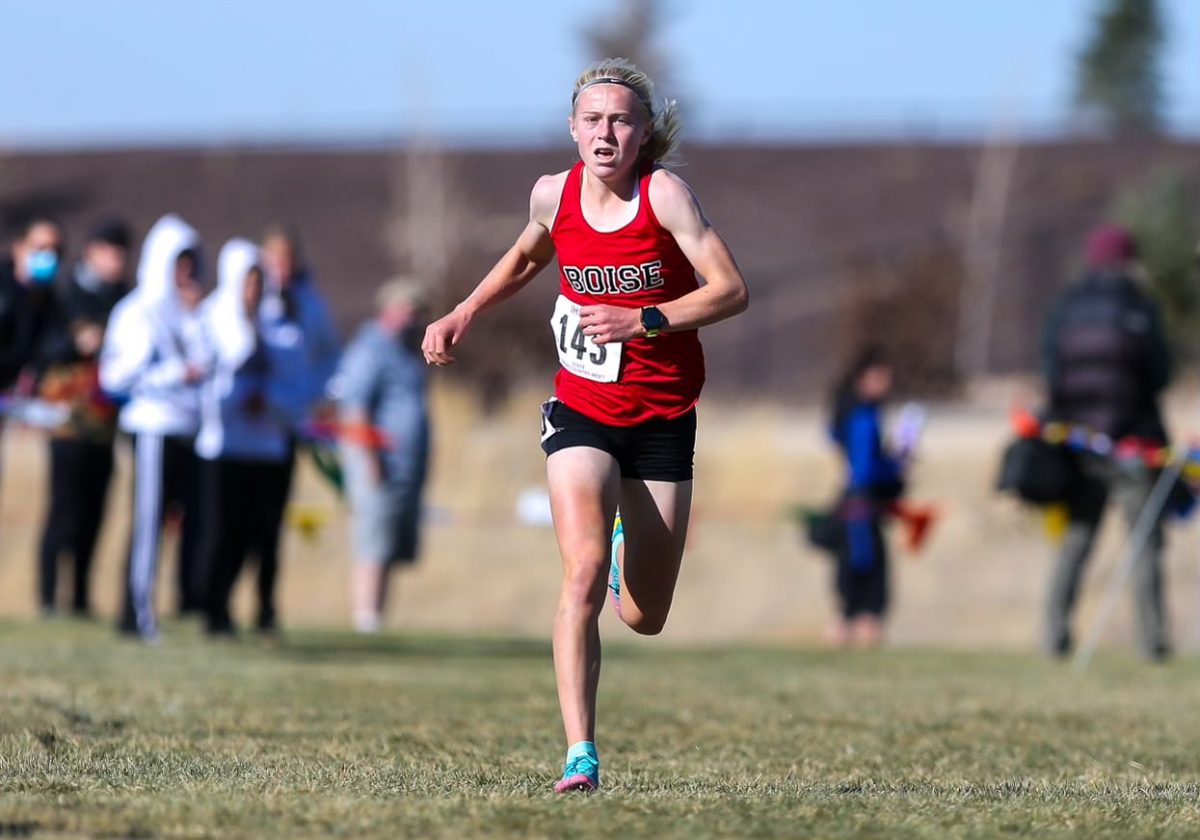
What might be closer to a rule is that injuries happen when the load that’s placed on the body exceeds the body’s ability to tolerate that load. In this equation, we can modify load via training parameters like the variables that the article above attempted to dissect: weekly volume, duration of runs, frequency of runs, and intensity (speed and/or elevation gain and loss). We might further modify running load via surface (pavement vs dirt), footwear quality, and running form (more on that in a minute). On the other side of the equation, we can modify the body’s ability to tolerate load via exercise and preparation for the demands of running (much more on that in a few minutes).
Just like there is no perfect skiing technique, there is no perfect running form. However, in both sports we do have an optimal range, and when movement patterns fall outside of that range they become inefficient. Decreased efficiency equals both decreased performance and increased load, neither of which are desirable. Inconveniently (again), it’s very hard to define what proper running form looks like. It’s maybe easier to define what it doesn’t or shouldn’t look like. Even then, there are only a handful of moderate correlations between aberrant running form and injury.
At the top of the list is overstriding, aka landing with your foot well out in front of your body’s center of mass. (This is not to be confused with heel striking—landing with initial foot contact through your heel as opposed to mid foot or forefoot. Heel striking isn’t necessarily overstriding though most overstriding does tend to be characterized by heel striking.) The primary issues with overstriding are an increase in peak/impact forces and a decrease in control of the knee, both of which are going to increase load on the body. Without diving too deep into the rabbit hole, the best way to correct an overstride is to increase the cadence or steps per minute—more steps at the same speed equals a shorter stride length. To train this, you need to be on a treadmill at a fixed speed (if you try to increase your cadence outside, you’ll likely just run faster) with your steps timed to the rhythm of a metronome. The target is to increase your steps per minute by 10%, which has been shown to effectively decrease loading rates.
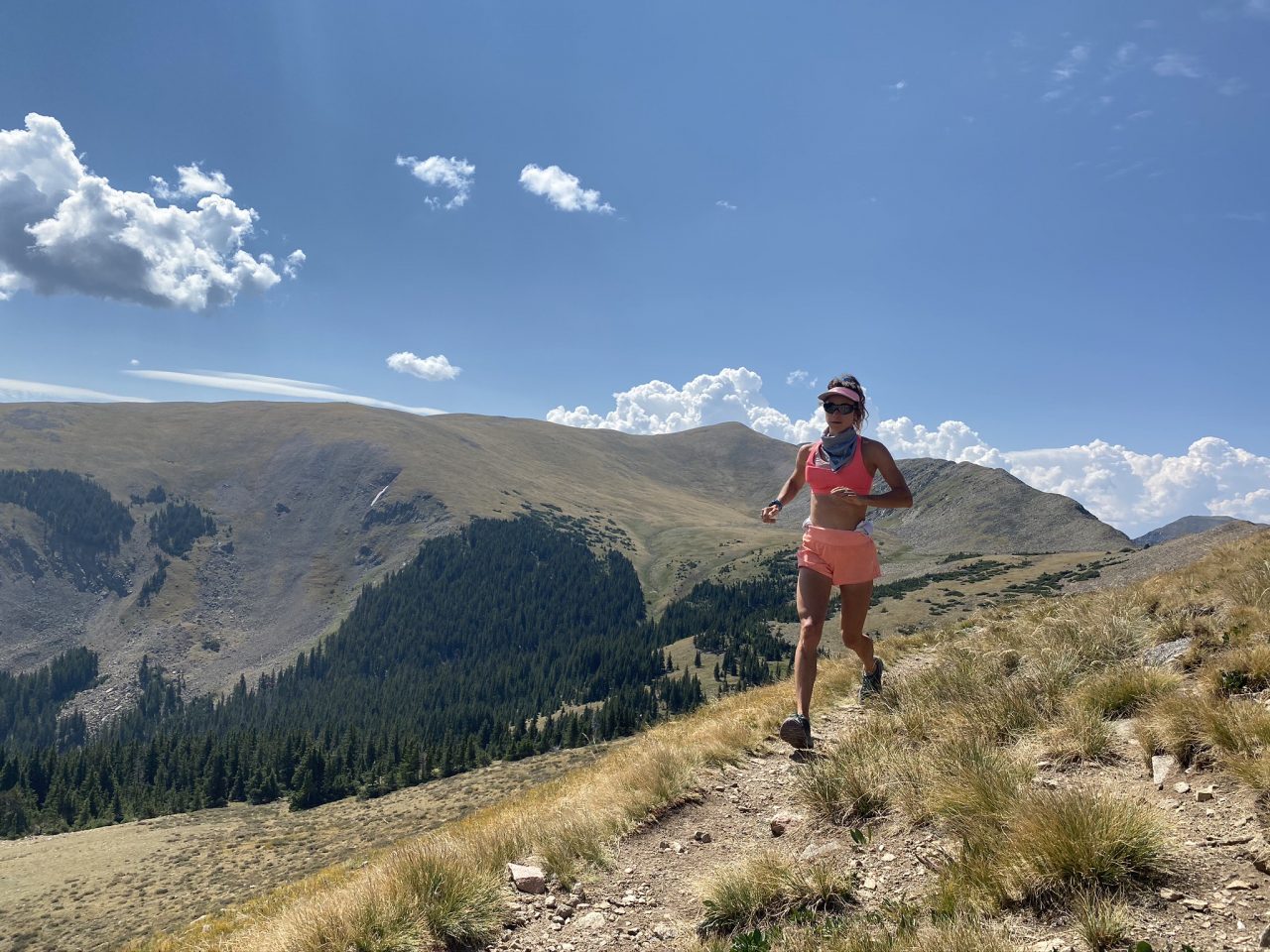
Next up is a lack of pelvic control or what’s often called hip drop or femoral adduction. This occurs when the muscles of the stance leg are overwhelmed and unable to control the hip, and therefore the pelvis. As a result the pelvis drops on the opposite side, altering knee kinematics in the process, and frequently causing knee pain. We look to correct this through exercises targeting hip strength, coordination, and control as well and balance and stability in single leg stance. Conveniently (finally), this would be all of our ski-specific dryland exercises and drills. If you are a FasterSkier regular, then you’ve already seen numerous exercise suggestions here, here, here, here, and here, all of which are quite appropriate for running injury prevention.
That’s a great segue into the other side of the equation: the body’s ability to tolerate load. To paraphrase Geoff Burns, PhD from a recent Science of Sport podcast on running biomechanics, It’s not any one component—joint or muscle—that correlates with injury or performance, but how the system behaves as a whole. We must behave like pogo sticks. More force in equals more force out. But the body must be able to withstand these forces and be able to direct them appropriately.
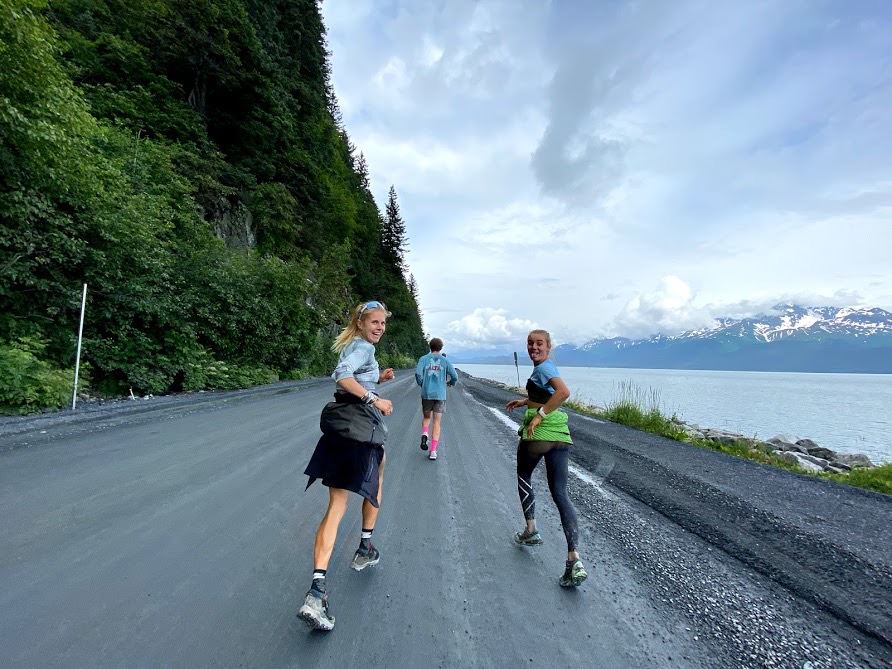
Essentially, Dr Burns is saying that running is an inherently high load activity and the body must be adequately prepared (strength, stability, mobility, etc) to handle these loads. Despite Instagram posts proclaiming Five Exercises Every Runner MUST Do! there is no magic exercise. I literally asked three different colleagues, all running injury specialists, What are your top three exercises for preventing running injuries? Inconveniently (here we go again), I got three different answers.
Not to use that as a cop out, or get away without including pictures of my bald head and yellow-walled basement, here are MY top three exercises for runners (and skiers). These, plus all of your other strength training and pay-to-play maintenance exercises, should be in the mix two or three times a week. As with any exercise, the goal is to challenge or nudge the body in order to get the desired adaptations. This, as with all training, is a bit of a Goldilocks thing: too hot and the body is unhappy and let’s you know about it; too cold and nothing happens. Please be aware that these exercises (and the ones in my previous articles linked above) may not be your Goldilocks. If you are currently dealing with a running related injury (or any musculoskeletal pain), please visit your friendly, neighborhood physical therapist instead of searching for an internet cure.
Triple Extension
This is a classic running form drill to promote pushing through the hip, knee, and ankle. The shape–the ability to fully extend the hip and knee while going high on your toes–is arguably more applicable to sprinters than distance runners; however, it makes my list due to the work done by the calf muscles which are major players in running.
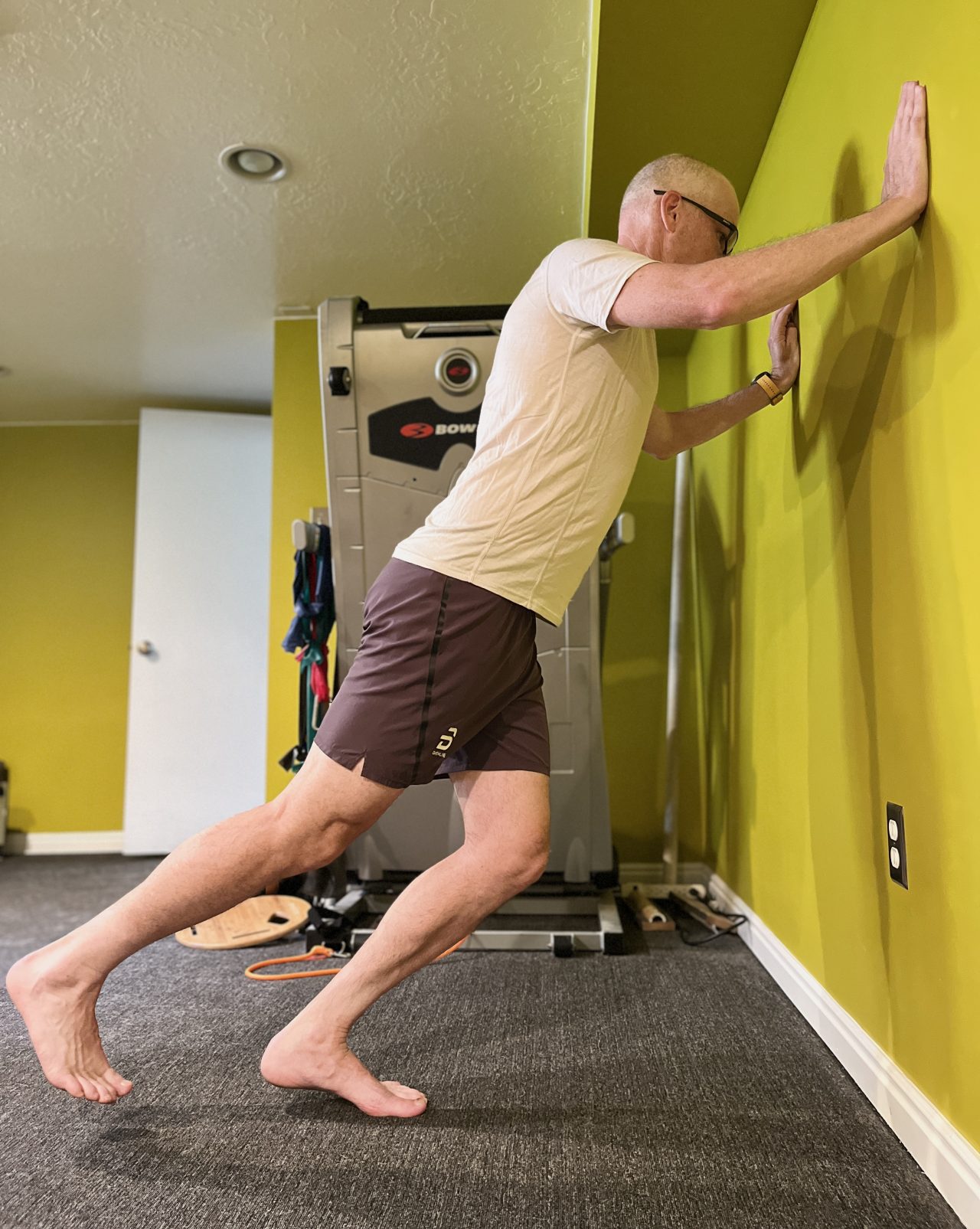
- Stand on one foot about 3 feet away from a wall. Hands are on the wall at about shoulder height. Imagine the wall is falling on you and you need to push it back upright. At the foot, your weight is biased toward the front of the foot so the heel is just high enough off the ground that you could slide a credit card under it.
- Still holding up the wall, drop down into a low squat with your opposite leg trailing behind.
- With a quick push, stand as tall as you can. You should have equal weight from the inside to outside of the foot, and the knee and hip should be straight, but thinking about getting tall often accomplishes the task.
- If doing this exercise on one leg is too challenging, you can do it both legs together.
- Aim for 2-3 sets of 10x on each side. This is also a good running warm up.
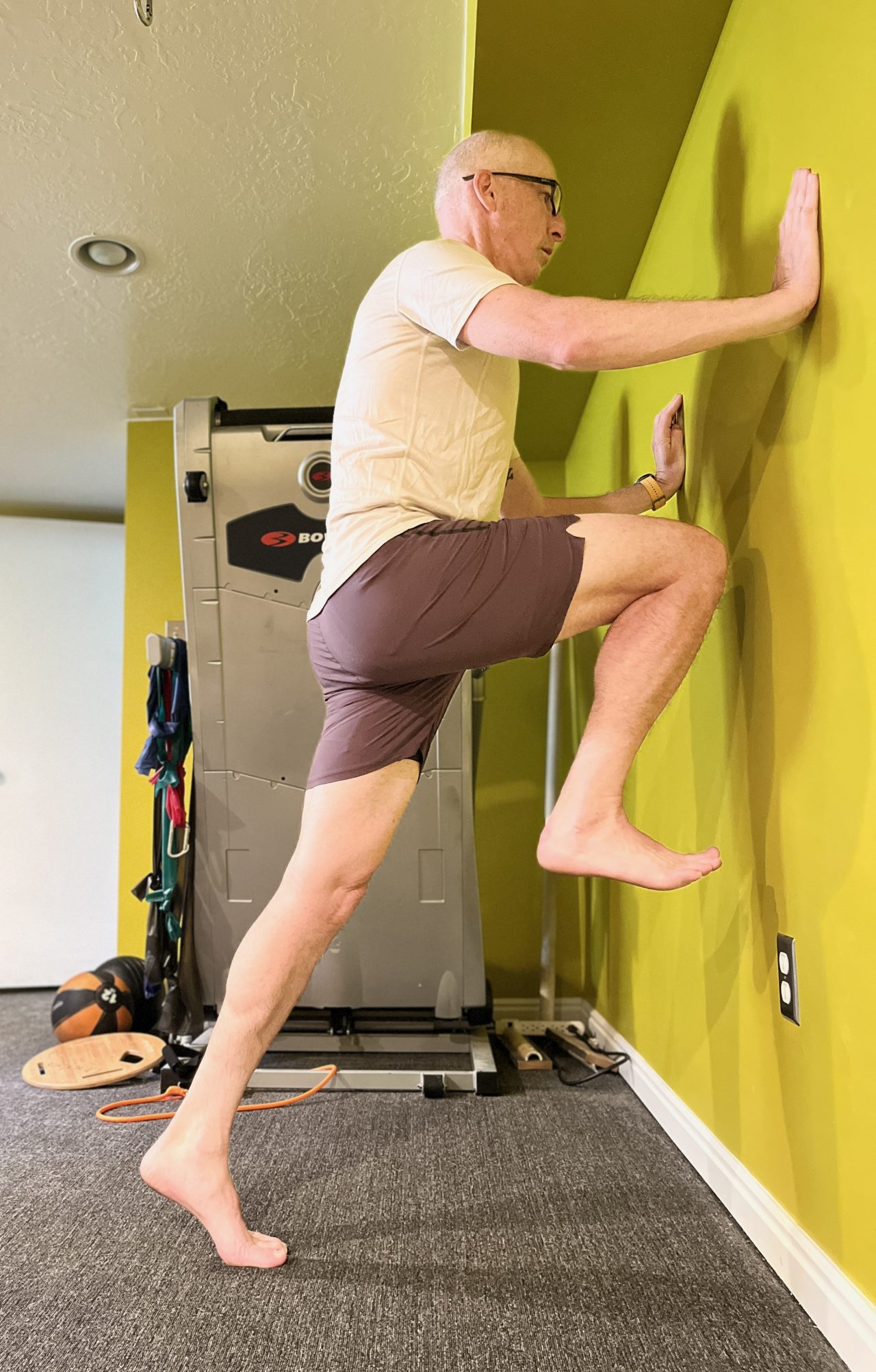
Bulgarian Split Squats aka Trail Leg Lunges
These work the glutes and quads more than squats due to the staggered stance and place more load (and balance demand) on the front leg than traditional lunges. More bang for your buck! The version I’m showing uses a hip strategy/hip hinge/trunk lean to increase the work done by the glutes.
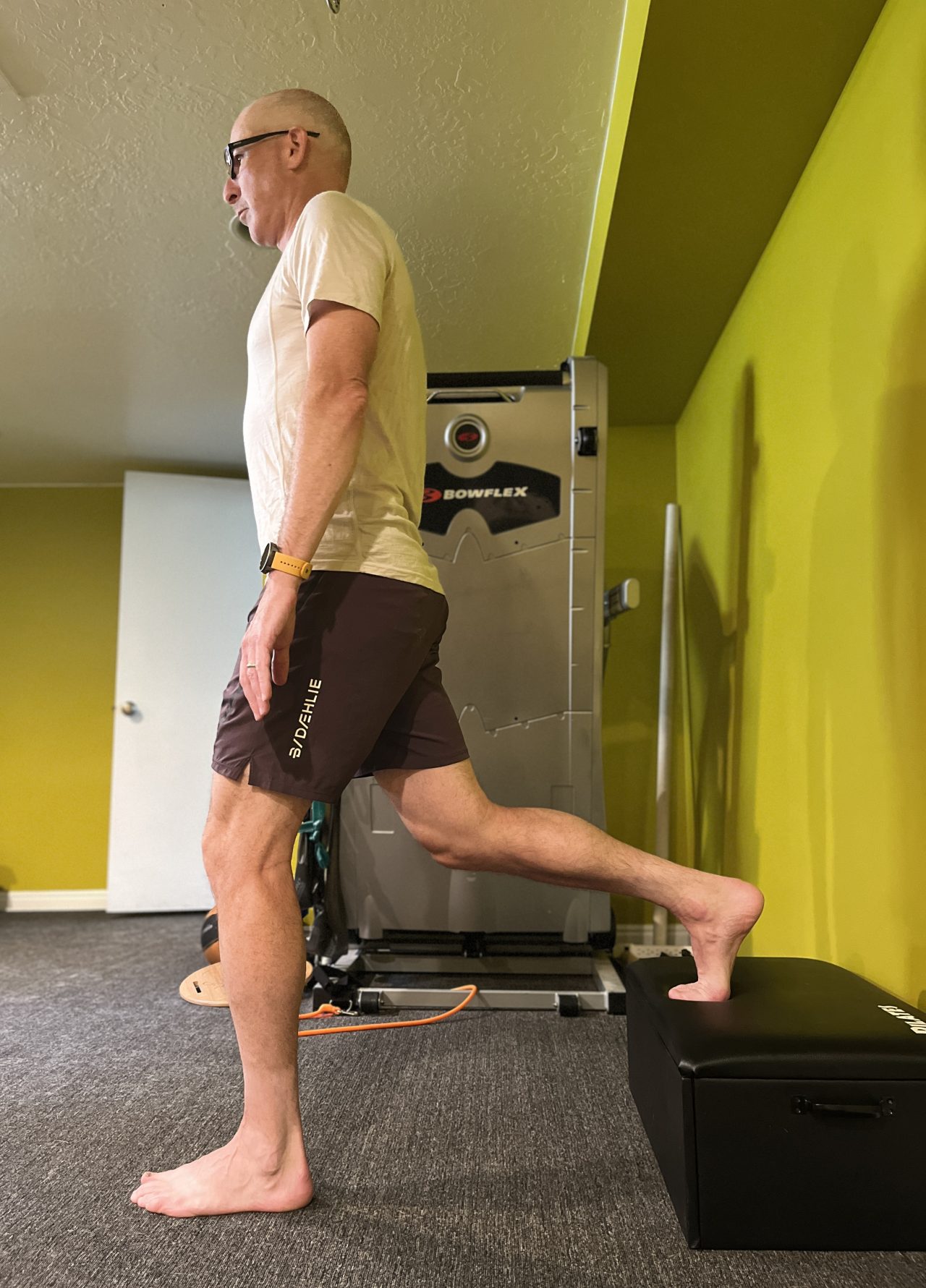
- Feet are staggered with the back foot on a step, box, chair, or bench.
- To determine the placement of the front foot, sit on the front edge of the step, box, etc. Straighten the working leg out in front of you. Keeping the heel on the floor, stand up onto that leg. Then place the back leg on the step with the sole of the foot vs top of the foot.
- As you drop into the lunge, your hips should go straight down.
- Aim your fingers for the sides of your ankle. This will promote the forward trunk lean.
- The knee will move forward a bit but shouldn’t be going past your toes.
- Shoot for 2-3 sets of 10x. You can make it harder by adding weights or increasing the height of the furniture. It can be regressed by keeping your back foot on the ground.
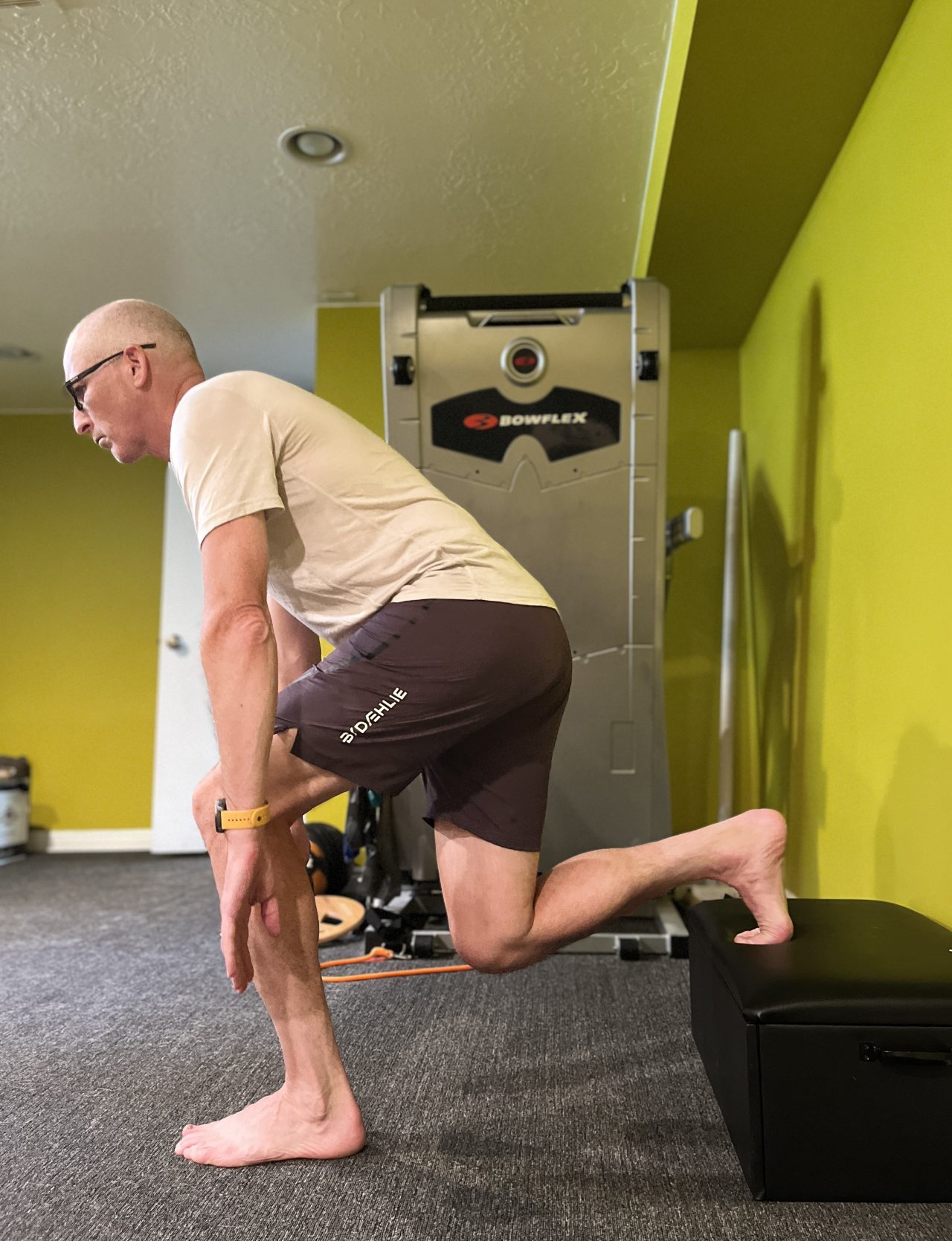
Side Planks
Typically thought of as a core strength exercise, which it very much is, these also do a lot to work gluteus medius, a major stabilizer at the hip (see the bit on pelvic drop above).
- Lying on your side, prop yourself up between the outside of your bottom foot and your elbow/forearm.
- Ankle, knee, hip, and shoulder are in a straight line, and your body should be vertical like a wall, not sagging or twisting to one side or the other.
- This is a timed hold. 30 seconds is a win. A minute is a gold medal but is getting boring and ready for some progressions (try it from your hand instead of elbow, add moving the top leg up and down, or twist like you’re reaching the top hand under your armpit). An easier version is to go from the knees instead of the feet (still keep your knee, hip and shoulder in line but bend at the knees so your feet are behind you).
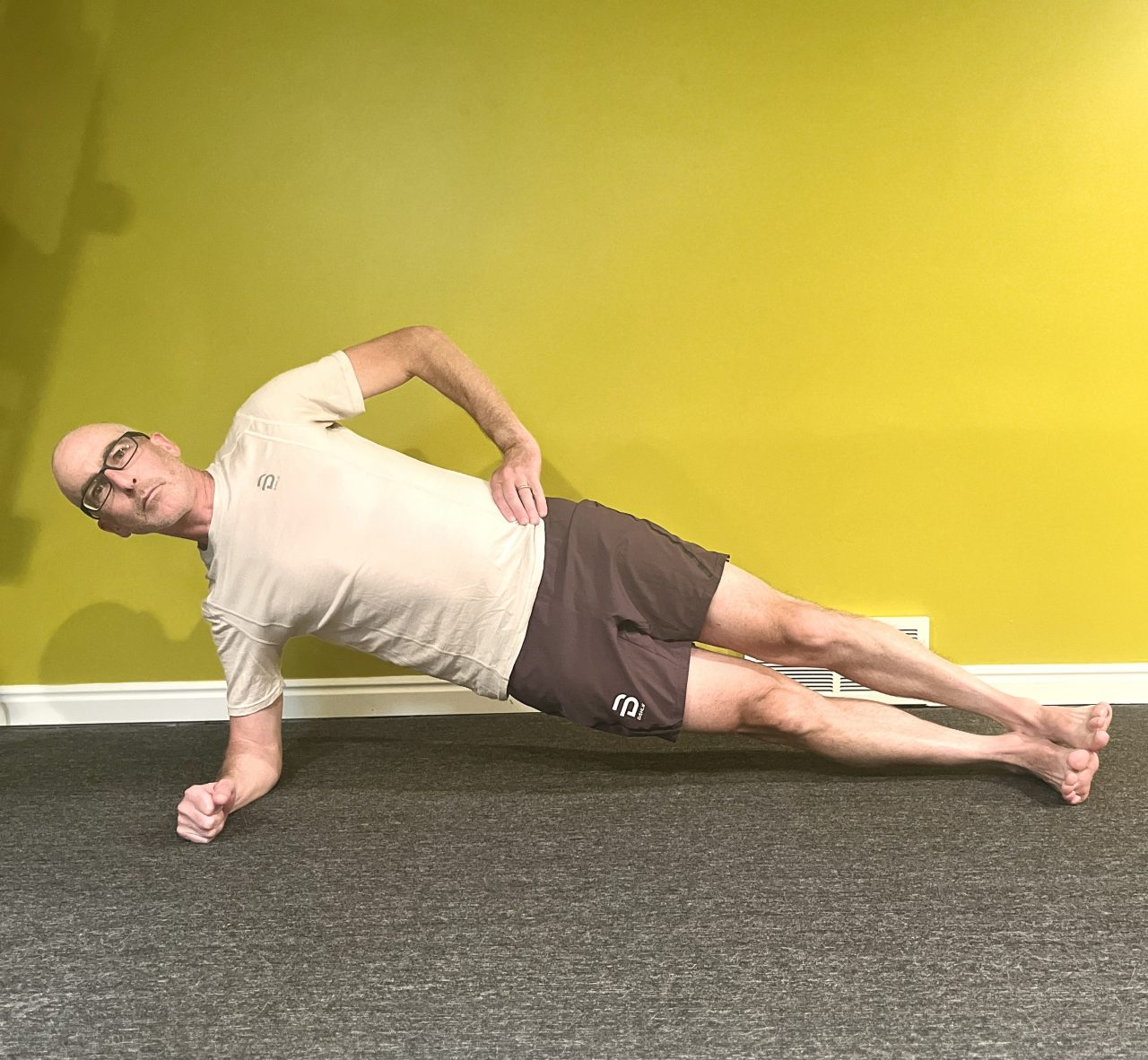
Ned Dowling
Ned lives in Salt Lake City, UT where his motto has become, “Came for the powder skiing, stayed for the Nordic.” He is a Physical Therapist at the University of Utah and a member of the US Ski Team medical pool. He can be contacted at ned.dowling@hsc.utah.edu.



